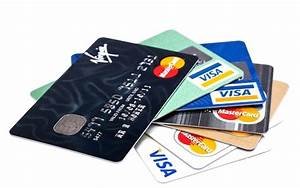Managing your credit card payments is essential to keeping your spending on interest and penalties low. You also want to pay your bills on time to avoid being marked as a defaulter, because this might mean that your card gets blocked.
Lastly, if you frequently forget to pay your credit card bills, or are unable to pay your credit card bill, your credit score will get affected. Your credit score, also known as your CIBIL score, is calculated based on your credit history and other factors. Banks and other creditors will refer to your credit score to evaluate whether or not to extend a credit-based product to you. This includes not just credit cards, but also EMI cards and loans.
To ensure you make credit card bill payments on time, you have to manage your billing cycle efficiently. Simple moves towards this goal can ensure that you make timely payments.
Step 1: Spade-work
Before you move onto bigger tasks, the first challenge at hand is to find out how long your credit card billing cycle is. Go through the literature that came with your credit card to determine precisely how long your credit card billing cycle is. It may be anywhere between 27 and 31 days. If you’re still choosing a card, you might want to go with a 31-day credit card cycle.
Step 2: Play around with dates
Now it is time to make the smart move. Change your billing cycle such that the date for your dues falls on pay-day or the day after. If your employer’s pay date varies from say the 31st to the 5th of the month, set the date for the 6th of every month. Ensure that you have at least 21 days between the end of your credit card billing cycle and the credit card payment due date.
Your credit card cycle is set up by default on the day that your credit card is activated. However, you can settle any dues, and then change the dates as per your convenience. If you’re bringing the date forward rather than postponing it, your bank might let you change your dates without even paying off your dues.
Step 3: Up your expenditure strategy game
Let’s say that your bill cycle starts on the 2nd of a given month. As a result, the 3rd of every month marks a new cycle. Suppose you want to buy an air conditioner that is on sale till the 10th of the month and today is the 1st of the month.
You can swipe your credit card to buy the AC today, meaning that the amount you paid for the AC gets counted in the current billing cycle. Assuming you have chosen the 6th as your payment date, you need to pay up by the 6th.
However, if you wait and buy the air conditioner on the 3rd, your purchase will fall under the next billing cycle. Then, you will have an extra month to pay. Interest is calculated once a month, and it will not make a difference interest-wise.
Note that this works for one-off big-ticket expenses, but will be moot if the big-ticket expense is a monthly fee, rent or some sort of recurring expense.
Use these tips to significantly reduce your monthly burden, and to save on penalties by paying your credit card dues on time. Managing your billing cycle wisely is a smart way to pay on time, and also to give yourself more time to pay (using step 3).
However, resist the temptation of giving yourself more time to pay by opting to pay only the minimum amount due every month. While this results in your card staying active, the pending amount accumulates interest, and in the months that follow, the interest is charged on the total amount.
That is, the original amount due + accumulated interest. This is a highly inefficient way of managing your credit card expenses. The wise way to give yourself more time to pay your credit card dues is by planning when to spend, and by managing your billing cycle.

